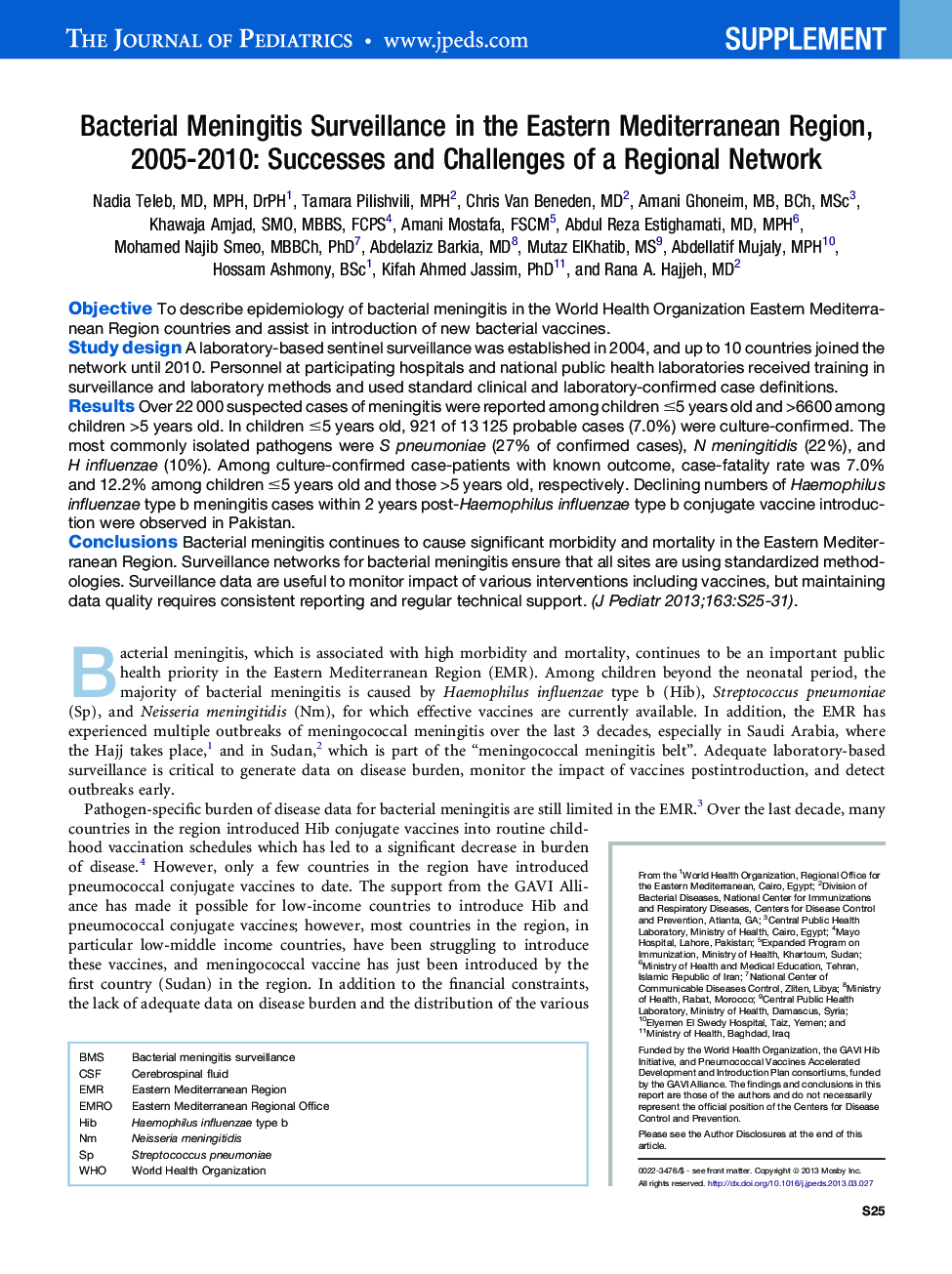| Article ID | Journal | Published Year | Pages | File Type |
|---|---|---|---|---|
| 4165369 | The Journal of Pediatrics | 2013 | 7 Pages |
ObjectiveTo describe epidemiology of bacterial meningitis in the World Health Organization Eastern Mediterranean Region countries and assist in introduction of new bacterial vaccines.Study designA laboratory-based sentinel surveillance was established in 2004, and up to 10 countries joined the network until 2010. Personnel at participating hospitals and national public health laboratories received training in surveillance and laboratory methods and used standard clinical and laboratory-confirmed case definitions.ResultsOver 22 000 suspected cases of meningitis were reported among children ≤5 years old and >6600 among children >5 years old. In children ≤5 years old, 921 of 13 125 probable cases (7.0%) were culture-confirmed. The most commonly isolated pathogens were S pneumoniae (27% of confirmed cases), N meningitidis (22%), and H influenzae (10%). Among culture-confirmed case-patients with known outcome, case-fatality rate was 7.0% and 12.2% among children ≤5 years old and those >5 years old, respectively. Declining numbers of Haemophilus influenzae type b meningitis cases within 2 years post-Haemophilus influenzae type b conjugate vaccine introduction were observed in Pakistan.ConclusionsBacterial meningitis continues to cause significant morbidity and mortality in the Eastern Mediterranean Region. Surveillance networks for bacterial meningitis ensure that all sites are using standardized methodologies. Surveillance data are useful to monitor impact of various interventions including vaccines, but maintaining data quality requires consistent reporting and regular technical support.
